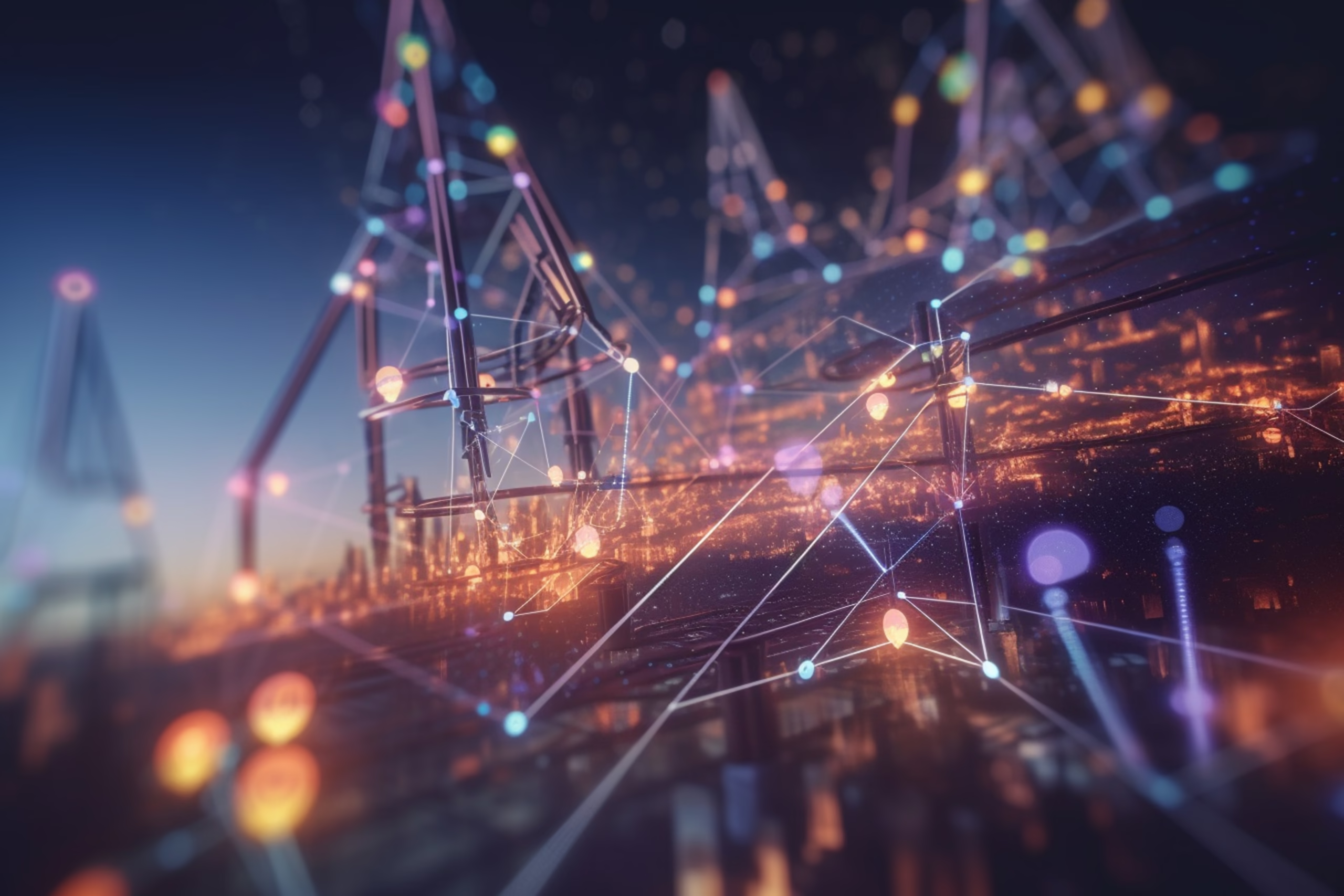At their core, Smart Grids are modern electrical grids that use cutting-edge technology to optimize the delivery and consumption of electricity. Unlike traditional grids, which primarily rely on one-way communication and outdated infrastructure, smart grids integrate real-time data, automation, and communication tools to create a more efficient and flexible system. These grids can detect energy demand changes, manage electricity distribution efficiently, and reduce energy loss.
How Smart Grids Work: A Step-by-Step Overview
Smart grids use systems and tech together for an interconnected network. Here’s a simple breakdown of how smart grids work:
- Sensors and Meters: Smart meters and sensors deploy throughout the grid to monitor real-time data on electricity consumption, voltage, and overall grid health. For instance, a Trilliant smart meter provides detailed readings that allow for better management of energy consumption.
- Automation: Automated systems within the smart grid can detect and respond to issues immediately, such as rerouting power during outages, reducing energy waste, and balancing supply with demand.
- Advanced Communication Networks: Utilities can analyze and make decisions based on real-time data transmitted back to central control stations from smart meters and sensors.
- Smart Grid Controllers: Controllers regulate electricity flow, integrating renewables efficiently into the grid.
The Key Features of Modern Smart Grid
The advanced features of smart grids make them stand apart from traditional grids. Some of the key features include:
- Real-Time Monitoring: The ability to track energy consumption at any given moment allows for more accurate billing and optimized energy distribution.
- Automation: Automated systems help reduce human intervention, improve response times, and ensure the grid is operating at its most efficient level.
- Smart Metering: Smart grid technology like the Trilliant smart meter allows utility companies to track energy usage more effectively, offering customers detailed insights into their energy consumption patterns.
- Energy Storage Solutions: These allow the grid to store excess energy produced during low demand periods for use during high demand.

Benefits of Smart Grid for Energy Distribution
There are numerous benefits to integrating smart grid into the energy sector, including:
- Enhanced Efficiency: Smart grids optimize electricity distribution, reducing loss and improving consumption efficiency.
- Cost Savings: With better load balancing and demand response capabilities, both consumers and utility companies can save on electricity costs. Consumers can also take advantage of programs like the National Grid smart thermostat rebate, which incentivizes energy-efficient upgrades.
- Improved Reliability: Smart grids can detect faults and reroute power to minimize blackouts and service interruptions, ensuring reliable energy supply.
- Environmental Impact: Smart grids lessen fossil fuel dependence, promote renewables, aiding sustainable energy.
Smart Grid and Renewable Energy Integration
One of the biggest challenges facing renewable energy sources like solar and wind is their intermittent nature. Smart grids and renewable energy work hand in hand to address this challenge. Smart grids are designed to seamlessly integrate renewable energy into the grid, helping balance the fluctuating supply with consumer demand.
Shortened Sentence: Smart grid adjusts energy distribution based on real-time solar and wind energy generation to meet electricity demand. Smart grid maximize efficient use of excess solar energy by storing or distributing it based on demand, reducing waste.
Role of IoT and AI in Smart Grid Technology
The power of the Internet of Things (IoT) and Artificial Intelligence (AI) lies in their ability to enhance the functionality of smart grid. IoT devices, such as sensors and smart meters, provide real-time data on energy consumption, grid performance, and system health. AI algorithms analyze data to predict energy demands, detect system failures, and optimize energy distribution.
Together, IoT and AI enhance grid adaptability to tackle energy challenges like integrating renewables and balancing supply and demand.
How Smart Grids Improve Energy Efficiency
Smart grids promote energy efficiency by optimizing the use of electricity and reducing energy waste. Through smart metering, real-time monitoring, and automation, energy use can be fine-tuned to match actual demand. This reduces the need for excess power generation, helping to minimize energy waste and lower overall consumption.
Additionally, Smart grid facilitate demand response programs, helping consumers save energy and costs by reducing consumption during peak hours.
Smart Grids vs. Traditional Grids: What’s the Difference?
Unlike traditional grids, which rely on manual intervention and outdated infrastructure, smart grid offer enhanced control, flexibility, and automation. Traditional grids are designed for one-way communication, limiting real-time adjustments.
In contrast, Smart grid enable two-way communication for monitoring consumption, responding to demand, and integrating renewable energy efficiently. Smart grid systems enhance resilience to disasters by automatically rerouting power during outages.
Challenges in Implementing Smart Grids
While smart grids offer numerous benefits, their widespread adoption faces several challenges. Smart grids face cybersecurity challenges due to their reliance on digital communication, making them vulnerable to cyberattacks.Securing the grid from potential threats is a top priority for smart grid companies and governments.
Additionally, Implementing smart grid and upgrading infrastructure in developing regions may be challenging due to high initial costs.
Real-World Examples of Smart Grids in Action
Across the globe, there are numerous examples of smart grids being implemented. The Smart Grids Innovation Hub in cities such as Amsterdam and San Francisco has boosted grid efficiency and renewable energy integration. These hubs showcase how smart grid can provide cleaner, more reliable energy systems and enhance overall energy management.
The Role of Smart Grids in Reducing Carbon Footprints
Smart grids are instrumental in reducing carbon emissions by enabling more efficient energy use and integrating renewable sources like solar and wind. Smart grid reduces energy waste, promotes cleaner energy, and supports sustainable future by minimizing reliance on fossil fuels.
How Smart Grid Enhance Energy Security and Reliability
Smart grids increase the security and reliability of the energy supply by allowing for real-time monitoring and quick responses to potential issues. Whether it’s rerouting power in case of an outage or addressing fluctuations in energy demand, smart grid ensure that the electricity supply remains stable and secure, even in the face of natural disasters or cyber threats.
Smart Grids and Consumer Empowerment: Smart Homes and Beyond
Smart grids not only benefit utility companies but also empower consumers to take control of their energy consumption. With the advent of smart thermostats and smart home systems, consumers can make smarter energy decisions, saving money while reducing their environmental impact. Programs like the National Grid smart thermostat rebate offer incentives to encourage the use of energy-efficient devices that work in harmony with smart grids.
The Future of Smart Grid: Trends and Innovations
The future of smart grid is bright, with ongoing advancements in technology such as 5G connectivity, AI, and blockchain. These innovations will enable even more efficient energy distribution, better integration of renewable energy, and enhanced grid resilience. As technology continues to evolve, we can expect smart grid systems to become even more intelligent and adaptable.

